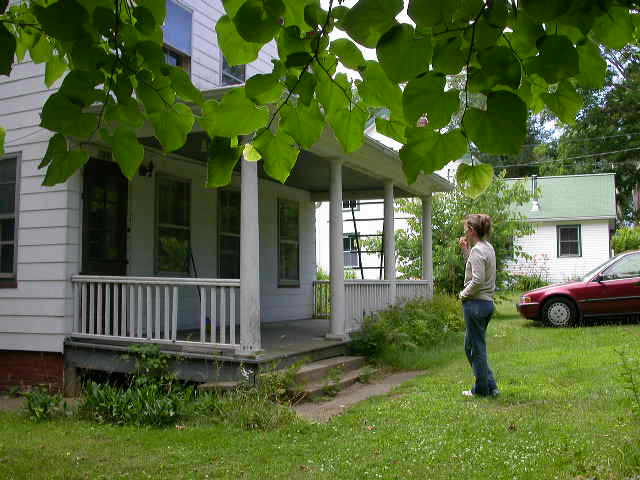
You’ve signed the pile of closing documents, officially hold the keys, and now stand in front of your house, realizing that smell is now YOUR very own damp plaster, mildew and mouse pee!
What now?
You might scan your memory for all the advice you’ve read online or gleaned from the slew of contractors and friends you’ve brought to look at the house, grasping for how it might actually apply to this house. YOUR house.
You might watch as the crew you hired unloads a truckload of demolition equipment. Ready or not, things are about to start happening really fast.
Or you might take a deep breath and turn to your Historic Rehabilitation Strategy.
In other posts, we’ve defined historic rehabilitation, the balancing act between preserving what is special about your house and what needs to be adapted for the 21st century. And strategy is another word for a game plan, blueprint or approach. It also comes from the Greek stratēgos, meaning “general”. A general is someone with experience, wisdom, perspective and the ability to call in necessary resources. In short, leadership.
Successful historic rehabilitation projects depend on strategy. It’s the “Phase Zero” planning that provides clarity on both the details and bigger picture. Heaven knows, there will be enough surprises waiting behind walls and under floorboards. A strategy helps you get out in front of the bombshells because you’ve made the key decisions – up front, before anyone starts swinging a hammer – that make all the thousands of little decisions much, much, much easier.
Elements of a Historic Rehabilitation Strategy:
1. Identify all the special historic features that are worth preserving
2. Establish project goals – historic rehab is at least 50% about meeting homeowner needs, today and for the future
3. Assess existing conditions to determine priorities – as in, fixing the roof before redoing the kitchen
4. Specify a scope and sequence of work to sensitively preserve the features identified in step 1 and meet goals/priorities established in steps 2 & 3
5. Explore historic tax credit opportunities
6. Determine expertise and skills needed – e.g., design professionals, specialized trades
7. Get other professionals’ input and begin building the team
8. Collaborate on developing the design, including drawings, fixture and material selections
9. Gather contractor estimates to create a budget
10. Identify permit requirements
Ready to strategize? Worth Preserving is here for you. The first step is setting up a site consultation – please visit Our Services to get started.
 KATE WOOD grew up criss-crossing the country in the family’s Volkswagen Bus, visiting house museums, battlefields, Main Streets, and national parks. Today, she is an award-winning preservationist, real estate broker and principal of the full-service historic rehabilitation consulting firm, Worth Preserving. Kate believes in the essential value of old-building stewardship to sustain community character. For her, each property is a cause and each client a fellow advocate. She specializes in matching people with properties, skilled contractors, historic tax credits and other benefits to support top-tier rehabilitation projects. For advice and solutions to help unlock the potential of your old house join My Newsletter.
KATE WOOD grew up criss-crossing the country in the family’s Volkswagen Bus, visiting house museums, battlefields, Main Streets, and national parks. Today, she is an award-winning preservationist, real estate broker and principal of the full-service historic rehabilitation consulting firm, Worth Preserving. Kate believes in the essential value of old-building stewardship to sustain community character. For her, each property is a cause and each client a fellow advocate. She specializes in matching people with properties, skilled contractors, historic tax credits and other benefits to support top-tier rehabilitation projects. For advice and solutions to help unlock the potential of your old house join My Newsletter.